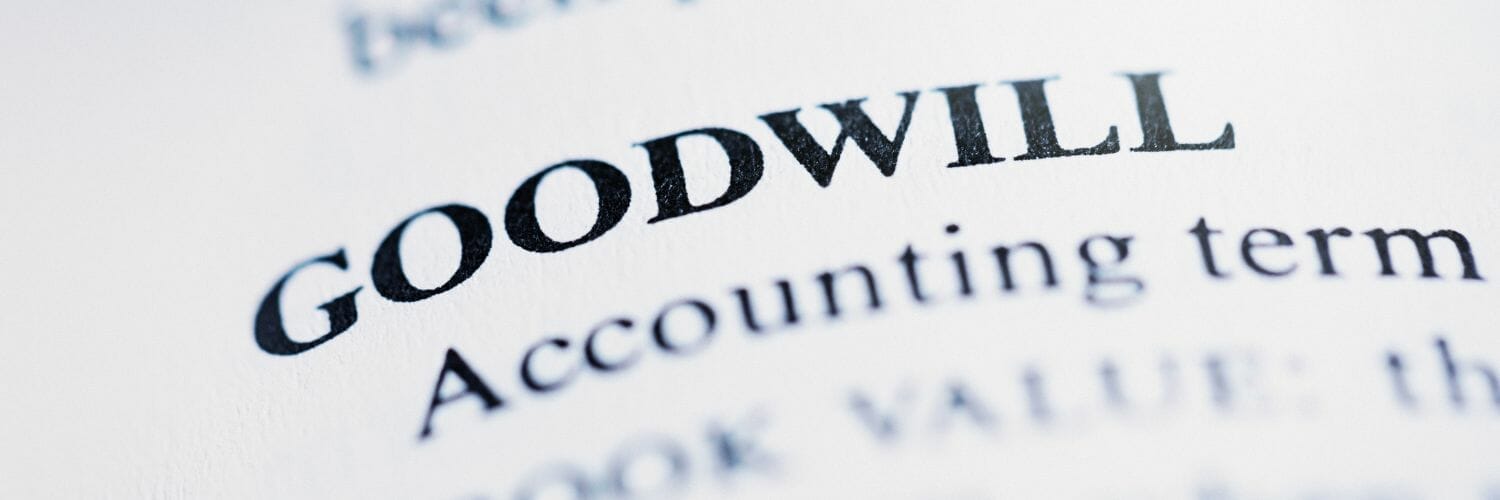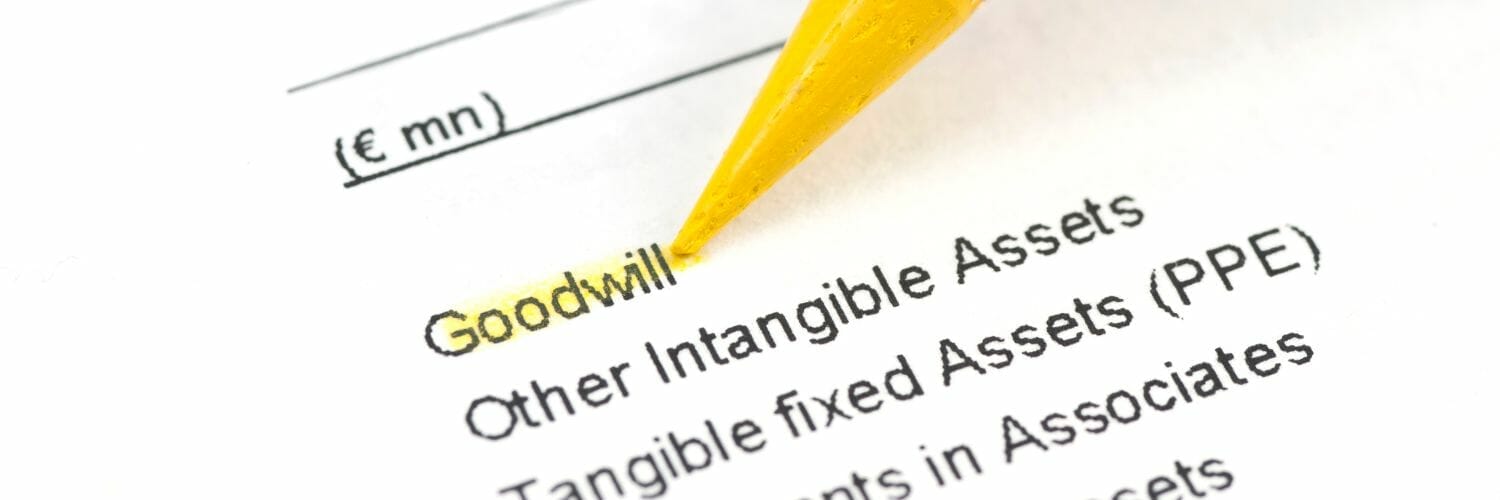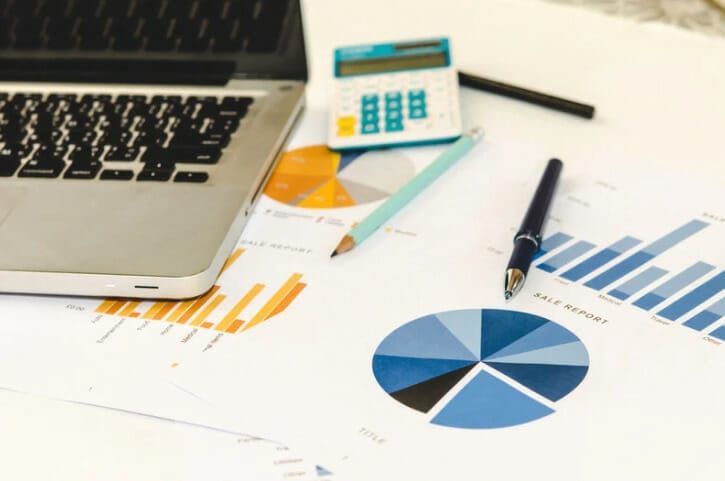“We don’t think in terms of appraising physical assets. We think in terms of economic goodwill… We only buy if we think [economic goodwill] will appreciate.”
Goodwill is controversial; many companies make up most of their assets with goodwill. Take, for example, the recent Amazon purchase of Whole Foods in 2017. Amazon paid $13.7 billion for the grocer, worth $9 billion more than the value of Whole Foods and its other net asset.
The issue is the $9 billion Amazon added to its assets as goodwill. By accounting rules, Amazon expects to evaluate or test that $9 billion yearly for any impairments or see if the value still holds. If they find a change in value, the impairment reduces the profits of Amazon.
All of the above remains perfectly legal, and there is no shadiness to the accounting. Still, companies can “pay” for purchases with intangible assets such as goodwill, putting the profits and shareholders at possible risk.
The valuation of goodwill remains a process that any purchase undergoes to determine the value of the assets and intangibles of that business. Understanding that process helps us understand any purchase and the possible ramifications, not only today, but in the future as well.
In today’s post, we will learn:
Ok, let’s dive in and learn more about goodwill valuation.
What is Goodwill?
Goodwill, as defined by Investopedia:
“Goodwill is an intangible asset for a company. It comes in various forms, including reputation, brand, domain names, intellectual property, and commercial secrets.”

The construct of goodwill comes into play when one company, such as Amazon, is contemplating purchasing another, such as Whole Foods.
Goodwill enters the picture when the other company pays significantly higher prices than its net assets’ fair market value of the purchased company.
The elements that make up the intangible assets of goodwill consist of the company’s good reputation, a loyal customer base, brand identity or recognition, a talented workforce, and proprietary technology.
Of course, these items are extremely valuable assets of any company, but they are not tangible or physical assets, and therein lies the problem. The intangible nature of those assets makes them difficult to value precisely.
The idea of goodwill goes back time, at least a century, and one of the first recorded definitions comes from 1907, in Halsbury’s Laws of England:
“The goodwill of a business is the whole advantage of the reputation and connection with customers together with the circumstances, whether of habit or otherwise, which tend to make that connection permanent.”
In the next sections, we will uncover more about goodwill accounting.
But first, here is another example of goodwill and its impact on a balance sheet.
In 2010, Facebook purchased the domain name fb.com for $8.5 million from the American Farm Bureau Federation. A domain’s name remains the sole value, or in this case, the initials.
The total Facebook paid for the domain name “Facebook” could recognize on its balance sheet as goodwill. But, before the transaction, the American Farm Bureau Federation didn’t recognize fb.com on its balance sheet as goodwill.
The trick here is Facebook paid $8.5 million for a series of initials. this was chump change for Facebook, but the bigger issue remains: instead of expensing the purchase and reducing earnings, the purchase adds to Facebook’s balance sheet as an asset.
Accounting vs. Economic Goodwill
Goodwill is sometimes mistakenly categorized as economic, business, goodwill, and goodwill in accounting.

Most refer to “accounting goodwill” as just recognizing the company’s accounting of “economic goodwill.”
Accounting goodwill defines an intangible asset created when one company purchases another for a price higher than the target company’s established fair market value.
Referring to the intangible asset as “created” is a bit misleading; creating an actual accounting journal entry, but that intangible asset already exists.
The entry of goodwill in the balance sheet as an asset is not genuinely creating an asset but merely recognizing the asset’s existence.
Economic, or business, goodwill remains an intangible asset, as previously defined, for example, Nike or McDonald’s strong brand identity. Those strong brand identities offer both companies a competitive advantage in their markets.
Addressing this intangible asset’s existence and estimating its value are often deduced from examining Nike’s return on assets ratio.
Buffett’s thoughts on goodwill from his 1983 Berkshire Hathaway shareholder letter lays out his idea and estimation of goodwill and its valuation:
“Businesses logically are worth far more than net tangible assets when they can be expected to produce earnings on such assets considerably in excess of market rates of return. The capitalized value of this excess return is economic goodwill.”
Buffett uses his purchase of See’s Candies as the prime example of goodwill and the valuation of that goodwill.
According to Buffett, See’s consistently earned $2 million in profit from net tangible assets of only $8 million. Of course, a 25% return on assets is insanely high; Buffett inferred the profitability of See’s remained largely due to the value of the intangible assets or goodwill.
Buffett mentions throughout his letters that See’s goodwill value remains evident from the incredible pricing power the company enjoys every holiday season and its outstanding customer service. He attributes much of See’s success to this intangible asset combination of customer service and a favorable reputation.
If you wish to research this subject more in-depth, please check out the post below:
Economic Goodwill vs. Accounting Goodwill: What Warren Buffett Says
Accounting for Goodwill
To understand goodwill and how it works from an accounting standpoint, we should walk through an accounting journal entry illustrating goodwill’s impact on a purchase.

Let’s say that Intel is going to purchase another company.
A sample journal entry might look like this:
Assets XX
Goodwill XX
Liabilities XX
Cash XX
To understand the above transaction, let’s look a little more in-depth.
The company Intel purchased is Mobileye, which it did in reality, but we will use this an example of how goodwill works from a balance sheet perspective.
Mobileye reports the following amounts before the purchase:
| Book Value | Fair Value | |
| Cash | $5,000 | $5,000 |
| Accounts Receivable | $75,000 | $67,000 |
| Inventory | $35,000 | $32,000 |
| PPE (net) | $201,515 | $235,000 |
| Intangible Assets | $20,000 | $20,000 |
| Total Assets | $336,515 | $359,000 |
| Total Liabilities | $150,000 | $150,000 |
| Net Assets | $186,515 | $209,000 |
Notice that the fair value differs from the market value of the assets from Mobileye. We can determine an asset’s fair value by accountants who determine what they analyze each asset’s values and what they could get on the free market.
If it appears completely arbitrary, you would be correct; thus, one of the problems with goodwill. The fair value assigned to different assets is according to one person’s assessment.
Let’s say that Intel now purchases Mobileye for $275,000, then the amount of economic goodwill created from the transaction is the purchase price minus the fair market value of the net assets.
Economic goodwill = $275,000 – $209,000 = $66,000
To illustrate Intel’s purchase via a journal entry:
Assets $359,000
Goodwill $66,000
Liabilities $150,000
Cash $275,000
The above example illustrates how goodwill works from an accounting perspective and the impact goodwill has on the balance sheet.
In fact, looking at the 10-K for Intel right after the purchase of Mobileye, we can see exactly how the purchase breaks down, all the amounts listed in millions:
- Short-term investments and marketable securities $370
- Tangible assets 227
- Goodwill 10,283
- Identified intangible assets 4,482
- Current liabilities (69)
- Deferred tax liabilities (418)
- Total paid 14,875
We can see from above that Intel paid primarily in goodwill for the purchase of Mobileye, which adds to the asset side of the balance sheet, improving the return on assets for the company.
The above illustrates how companies treat goodwill and its impact on return on assets or the company’s valuation on a relative basis.
The company states:
“Goodwill of $10.3 billion arising from the acquisition is attributed to the expected synergies and other benefits that will be generated from the combination of Intel and Mobileye. Substantially all of the goodwill recognized is not expected to be deductible for tax purposes. The goodwill recognized from the acquisition is included within “all other.”
Valuation of Goodwill
The value determining the valuation of a company’s goodwill helps you understand the company’s purchase and how that might impact the purchaser’s assets. For example, Nvidia recently announced they would purchase Xilinx, purported for approximately $30 billion.

We have several methods for valuing goodwill of purchase, and we will use Xilinx as our guinea pig so you can follow along with the concepts.
The first method to use is the purchase of average profit method.
Using this goodwill valuation method, we average the profit of the last few years and multiply the average by a certain number of years to calculate the goodwill value.
Goodwill Formula = Average profit x Years of purchase
The average profit equals the total profits of the agreed-upon years divided by the number of years.
As mentioned above, AMD agrees to purchase Xilinx, with the average profits of Xilinx over the last five years. The companies agree to the company’s purchase based on the average profit over four years.
Profits over the last five years:
- 2017 – $628
- 2018 – $464
- 2019 – $890
- 2020 – $793
- TTM – $645
Average of the profit = (628 + 464 + 890 + 793 + 645) / 5 = $684
Goodwill = $684 x 4 years
Goodwill = $2,736 million
Based on this valuation method, AMD would value its purchase of Xilinx for $2,736 in goodwill.
Another method using the numbers from above is the capitalization method.
Goodwill = capitalized average net profit – net tangible assets
Now, using the above profit average, we can calculate goodwill. The normal return on assets for Xilinx is 13%, based on the 10-year median, and the average profits for Xilinx are $684 million.
Looking at the balance sheet for the company, we find the following:
- Assets – $4,074
- Liabilities – $2,378
Now, let’s calculate the goodwill using the numbers from above:
- Capitalized value of the profit = $647 million / 13% return of assets = $4,976
- Net assets of Xilinx = $4,074 – $2,378 = $1,696
- Value of the goodwill = $4,976 – $1,696 = $3,280 million
The above is simple, huh? Let’s try a few more to ensure we understand the concept and how the formula works.
Let’s use Whole Foods for our next example.
First is the company’s net profit for the last five years before Amazon purchased the company.
- 2013 – $551
- 2014 – $579
- 2015 – $536
- 2016 – $507
- TTM – $388
Whole Foods’ average profit over the last five years:
(551 + 579 + 536 + 507 + 388) / 5
Whole Foods average profit = $2,561 / 5 = $512.2 million
If Amazon agreed to purchase Whole Foods for the average profit for ten years, we would find goodwill.
Whole Foods goodwill = $512.2 million x 10 years = $5,122 million
Now, let’s try using the next process to find the goodwill based on the net profit’s capitalization.
Using the average net profit from above and the 10-year median return on assets of 8.3%, and from the balance sheet:
- Total assets – $6,341 million
- Total liabilities – $1,341 million
We can capitalize on the goodwill using our above formulas.
- Capitalization of net profit = $512.2 million / 8.3% return on assets = $6,171 million
- Whole Foods net assets = $6,341 – $1,341 = 5,000 million
- Value of the goodwill = $6,171 – $5000 = $1,171 million
Amazon’s actual amount to goodwill for the acquisition of Whole Foods was approximately $9 billion, of which Amazon paid $13 billion for Whole Foods.
Based on our first calculation, we were in the ballpark for the amount Amazon was paying for the intangible assets of Whole Foods.

These examples aim to help us understand the valuation of any company’s goodwill; remember that assumptions play an important part, as with any valuation method.
In this case, we are assuming the length of terms for the averages when the periods might be longer or shorter, which impacts the final values.
It is not critical to find the exact value of the goodwill; rather, it estimates how any purchase might impact the acquirer and the effect of the goodwill on the company’s value.
Final Thoughts
Goodwill has an impact on the value of the company that acquires another company, not only in the addition of assets but also in the potential liability.
Impairments to goodwill are a liability that is not often discussed until they happen, but they can have an immense impact on the company’s value. Once the impairment occurs, there are real consequences to those expenses.
An impairment to goodwill reduces the company’s assets, which impacts the company’s earnings, and each year, every company is required to assess the condition of its goodwill.
Impairments impact the shareholders, as we lose value from the reduction of the earnings, which Wall Street hates, especially surprise losses such as goodwill impairments.
Therefore, understanding goodwill and how to value goodwill helps us investors realize any form of potential impact, now or into the future, of our company buying another company.
With that, we will wrap up our discussion on the goodwill valuation.
As always, thank you for taking the time to read this post, and I hope you find something of value on your investing journey.
If I can be of any further assistance, please don’t hesitate to reach out.
Until next time, take care and be safe out there,
Dave
Related posts:
- Analyzing Intangible Assets and Their Impact To Assets and Operating Income The change in how companies invest their capital has grown exponentially, and accounting rules have not kept up. Intangible assets comprise a larger portion of...
- Depreciation and Amortization – A Complete Financial Statements Guide Updated 8/7/2023 Buying businesses and equipment for operations is a part of business, and using depreciation and amortization is how companies account for those purchases....
- How Amortization of Intangible Assets Works; When it Unleashes Higher ROIC The amortization of intangible assets can sometimes be hidden in the consolidated financial statements because amortization is grouped in with depreciation. But as the economy...
- Simple Balance Sheet Structure Breakdown (by Each Component) “Never invest in a company without understanding its finances. The biggest losses in stocks come from companies with poor balance sheets.” Peter Lynch The ability...
